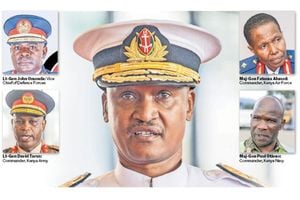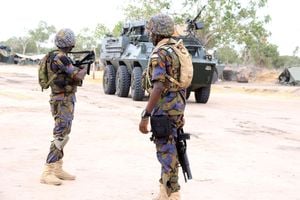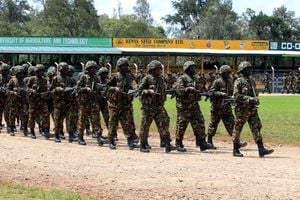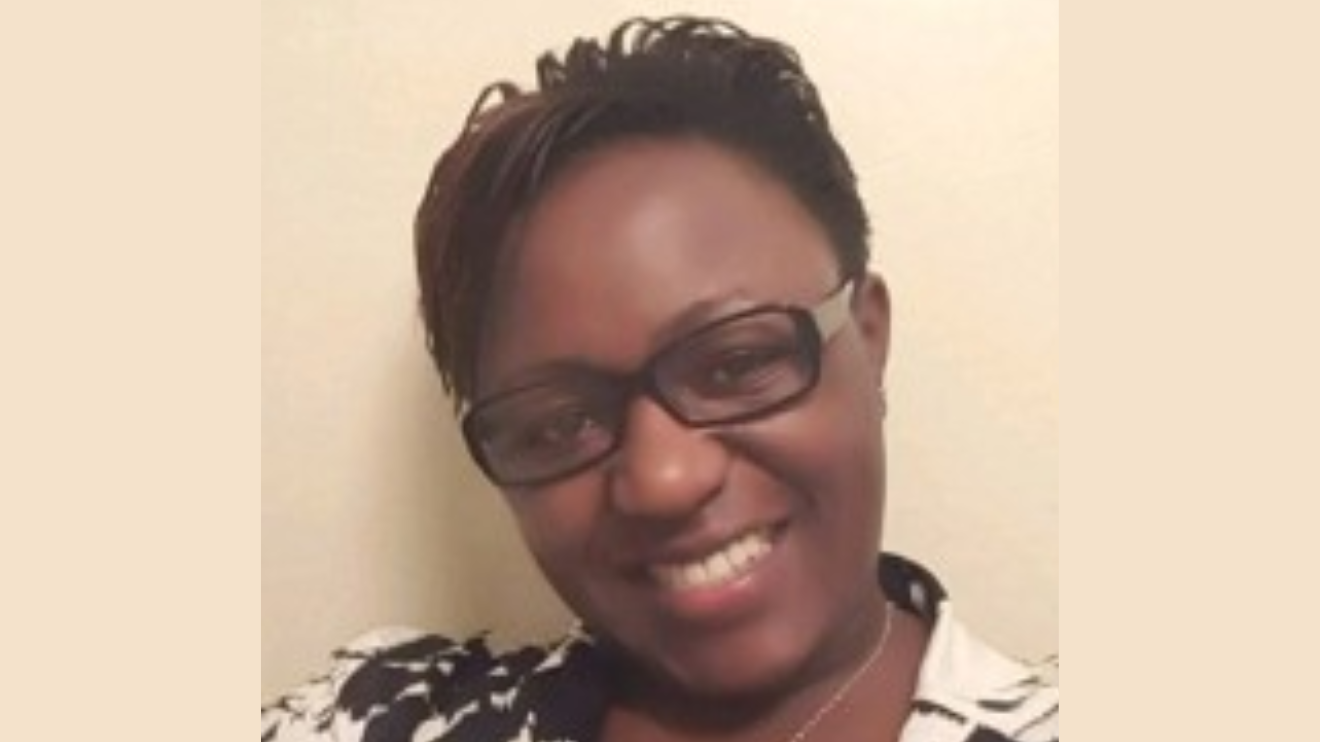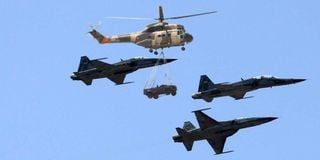
Kenya Air Force Puma aircraft (hoisting a Land Rover) and fighter jets during the Kenya Air Force Golden Jubilee celebrations at Moi Air Base Eastleigh, Nairobi on 4 June 4, 2014.
On October 14, 2011, a formation of F5 fighter jets of the 15 Tactical Fighter Squadron of the Kenya Air Force (KAF) pummelled Al-Shabaab bases in Somalia with bombs. This was Kenya’s first-ever war engagement into another country involving all its military units but in which Kenya Air Force played a decisive role.
With precision, the brave KAF pilots picked out the insurgents’ camps in Dhobley, Tabda, Hawina, Beles Qocani, Shaba and Afmadhow and hit them in an operation that would later clear the way for Kenya Defence Forces ground troops to enter Somalia and flush out the nuisance that Al-Shabaab had become. The initial air raids destroyed the terrorists’ command centres and key locations, disrupting their logistical organisation in the critical junction linking Gedo region and Lower Juba. Within three days of the raids, KAF had effectively incapacitated Shabaab’s command and control structures, rendering them vulnerable to attacks by ground troops.
“The brave pilots, with precision and exceptional airmanship carefully picked and took out key Al-Shabaab positions in Dobley and Tabda before moving on to Hawina, Beles Qocani and later on to Shaba and Afmadhow. It was the significant air strikes that took place in the initial phase of the war that enabled the army to quickly move in and secure the first phase line of the campaign,” recalled the then-Laikipia Air Base Commander, Brigadier Francis Ogolla, who was the air component commander of Operation Linda Nchi. He rose to a four-star General and was appointed the Chief of Defence Forces in April 2023. Gen Ogolla died in a helicopter crash in Elgeyo Marakwet County on April 18.
Just the ground troops had entered Somalia, heavy rains curtailed their movement and only the Air Force continued with sorties to hit the enemy. Ground movement was difficult. When Uganda and Burundi – who had deployed their militaries to fight Shabaab as early as 2007 – noticed the effectiveness of the Kenyan air superiority, they quickly forced the terror group’s fighters out of Bakra market in Mogadishu, where they had been operating.
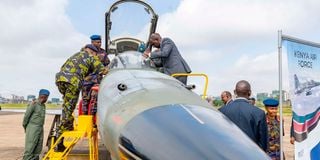
President William Ruto and Deputy Chief of Defence Forces Lt Gen John Omenda atop a jet fighter during the Kenya Air Force 60th anniversary celebrations at Moi Base Eastleigh in Nairobi County on June 8, 2024.
This movement out of Bakra influenced the forceful removal of Shabaab from Mogadishu by the Uganda and Burundi militaries. KAF airpower determined the trajectory of the African Mission in Somalia (Amisom) operations for the better. It made it easier to remove the insurgents from many towns they had occupied over a long period of time. But the Kenya Air Force’s crucial life-saving role in the April 4, 2012 ‘Battle of Hoosingo’ will forever be etched in the memories of KDF troops involved.
Under attack by three waves of over 600 Shabaab fighters and almost running out of ammunition, KDF troops in the Hoosingo Forward Operation Base (FOB) were relieved when F5 jets hit the enemy positions repeatedly. After an eight-hour battle, the F5s, Z9s and Hughes 500D attack helicopters swarmed in neutralising the attackers’ command and communication centre in three successive attack missions.
Of all the KAF aircraft, Shabaab fighters are scared of Hughes MD 500 attack helicopters known for mowing down trees in the insurgents’ hideouts in the vast Somalia terrain.
KAF started in 1964 when President Jomo Kenyatta inaugurated and unfurled its flag at Harambee House. Fourteen commanders later, KAF, which marks its 60th anniversary this week, has evolved from a Royal Air Force Squadron into a formidable protection unit.
KAF has grown from the Royal Air Force’s (RAF) East African Air Headquarters, Eastleigh when a small number of tradesmen were given short courses of line servicing of various aircraft including Tempest, Bristol Brigands, Lancasters, Handley Page Hastings, Valletras and Dakotas to what it is now, engaging highly skilled personnel operating Unmanned Aerial Vehicles (drones).
Harambee House
On June 1, 1964, KAF under the command of Group Captain Ian Stockwell, was formally inaugurated as the Kenyan military’s air squadron at Harambee House, Nairobi, by President Kenyatta and the Air Force flag unfurled after taking over from the Royal Air Force.
The first Kenyan Air Force Commander was Colonel Dedan Gichuru, who served between April 17, 1973 and June 26, 1980, and then again between February 27, 1986 and May 9, 1989. By the time Kenya gained independence in 1963, only five Kenyans, among them Gichuru, Hannington Apundo, James Mukirae and Collins Omondi had been trained in Israel and quickly took over leadership.
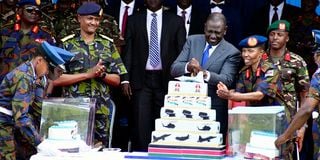
President William Ruto (centre) is assisted by the Commander of the Kenya Air Force (KAF) Maj. Gen. Fatuma Ahmed (right) during the 60th anniversary celebrations of the Kenya Air Force at Moi Air Base on 8 June 2024. With her is the Chief of Defence Forces Gen. Charles M. Kahariri.
The pilots used Canadian Chipmunk, Canadian Beaver and Caribous aircraft after being commissioned by President Jomo Kenyatta on April 17, 1965. Their first missions were to support the army during the anti-Shifta campaigns. The number of pilots has since grown in leaps and bounds with many of those who have come out of service continuing to serve as civilian pilots for the country’s carrier and other passenger and cargo companies.
Tonje Rules
With its motto ‘Tuko Imara Angani’ (We are sturdy in the Air) KAF has grown in leaps and bounds, accumulating F-5, F-15, Tiger jet fighters, Beavers, Caribous, Chipmunks, Tucanos, Hughes MD 500s, Harbin Y-12s Buffalos, AW139s, Pumas, Fokker 70s, Dash 8s, MI-171Es and Unmanned Aerial Vehicle (Drone). Its vision is to be a premier Air Force that defends and maintains sovereignty of Kenyan airspace.
“All of us in the Air Force cannot but marvel at the evolution of what started as the Royal Air Force, Kenya Flight. It had five officers and two Chipmunks in one station at Eastleigh, Nairobi, but is now a robust service with fighter jets, cargo and troop transports and helicopters. It also has a VIP squadron, Unmanned Aerial Vehicles, all supported by highly efficient ground services and operated by several thousand local personnel,” Maj-Gen (rtd) Joff Otieno, Air Force Commander between 2011 and 2014, told the Nation in 2014.
While KAF is headquartered at Moi Air Base, Eastleigh, there is the Laikipia Air Base in Nanyuki and Forward Operating bases (FOBs) in Mombasa at the Moi International Airport, Wajir, Mandera and Nyeri.
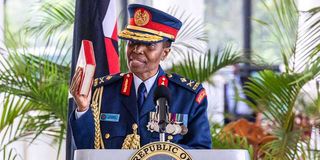
Major General Fatuma Ahmed the Commander of Kenya Air Force takes oath of office at State House, Nairobi.
KAF also operates a Cooperative Security Location (CSL) in Manda Bay shared with the US military. Since the introduction of the Tonje Rules by the then-Chief of General Staff, General Daudi Tonje, KAF has produced two CDFs: Gen Julius Karangi (July 2011 to May 2015) and Gen Ogolla. General Mohamud Mohamed, a former Air Force Commander, was the CGS between 1986 and 1996.
The first ever female military officer to reach the rank of Brigadier and later Major-General is Fatuma Ahmed, the current Commander of the KAF. The first female KDF spokesperson Brigadier Zipporah Kioko is also from KAF.
Gen (rtd) Karangi, a former Air Force Commander himself, alluded to the symbiotic relationship between the service and civil aviation.
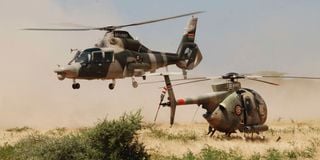
Kenya Defence Forces’ combat helicopters during Operation Linda Nchi.
“Command of the Air Force came with new challenges. However, having grown in the system at Moi Air Base and having held several positions in KAF, I found myself in familiar grounds and took a relatively short time to settle. The most challenging issue that I faced was the aspect of crew retention.
Excellent pilots
“The Air Force trains excellent pilots and technicians and as the markets expand most airlines want to depend on the Air Force to supply them with skilled manpower. Airlines offered what was often irresistibly high wages and our personnel, especially pilots, went for these green pastures.”
The biggest beneficiary of Air Force air and ground crews has been the national carrier, Kenya Airways, which at some point was reputed to have 50 per cent of its pilots and 70 per cent of its technicians from the Air Force. Maj-Gen (rtd) Michael Gichangi served as a squadron and instructor pilot and was the first to achieve 1,000 hours on the F-5 jet fighter.
Sixty years ago, the theatre of Kenya Air Force combat operations was the North Eastern Province where the independence government was battling insurgents, known as Shifta, seeking secession from Kenya to become part of what was referred to as Greater Somalia.
1982 coup attempt
The Air Force role was to provide support for the Kenya Army. Today, the service is still flying in that direction, only that this time it is deep inside Somalia engaged in a full blown war against Al-Shabaab terrorists.
The difference between 60 years ago and today is that part of the personnel in today’s Air Force includes women who serve as pilots, engineers, technicians, crash and rescue, air defence, air operations and air traffic control personnel. None featured in 1964.
The biggest blight on KAF happened during the August 1, 1982 attempted coup initiated by junior soldiers in which combat pilots were ordered at gun point to take off from their stations on a mission to bomb State House. Several of the soldiers who masterminded the attempted coup, including Hezekiah Ochuka, Corporal Walter Odira Ojode, and Corporal Bramwel Njereman faced court martial at Lang’ata Barracks and were sentenced to death.
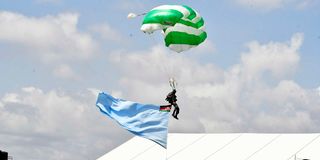
A Kenya Air Force paratrooper lands safely during the 60th-anniversary celebrations of the Kenya Air Force at Moi Air Base, Nairobi on June 8, 2024.
A huge number of officers and soldiers who did not actively participate in the coup were subjected to harsh screening, incarcerated in prison for at least a year each before their release. What began thereafter was the reconstitution of Kenya Air Force to ‘82 Air Force and then back to Kenya Air Force. Central figures in the 1982 coup attempt, the most traumatic event in Kenya Air Force history, are candid about the event. Nick Leshan, who retired as Vice-Chief of the Defence Forces, was the air transport major who was commandeered to fly a Buffalo aircraft to Dar es Salaam by coup leader Hezekiah Ochuka and co-conspirator Pancras Okumu.
Hijack victim
“My happiest moment in my three and half decades of service in the Kenya Defence Forces is getting back the Kenya Air Force from what it was called after August 1982 – the ’82 Air Force. The unfortunate events of 1982, of which I was a hijack victim, resulted in a death and resurrection. The return of the blue uniform meant everything to me.
“To me, the term ‘82 Air Force was an insult. Yes, some people in the service had made a big mess and plunged the country in chaos. But not everybody was involved in that matter. And you don’t destroy an institution because a few people have done the wrong thing.”


